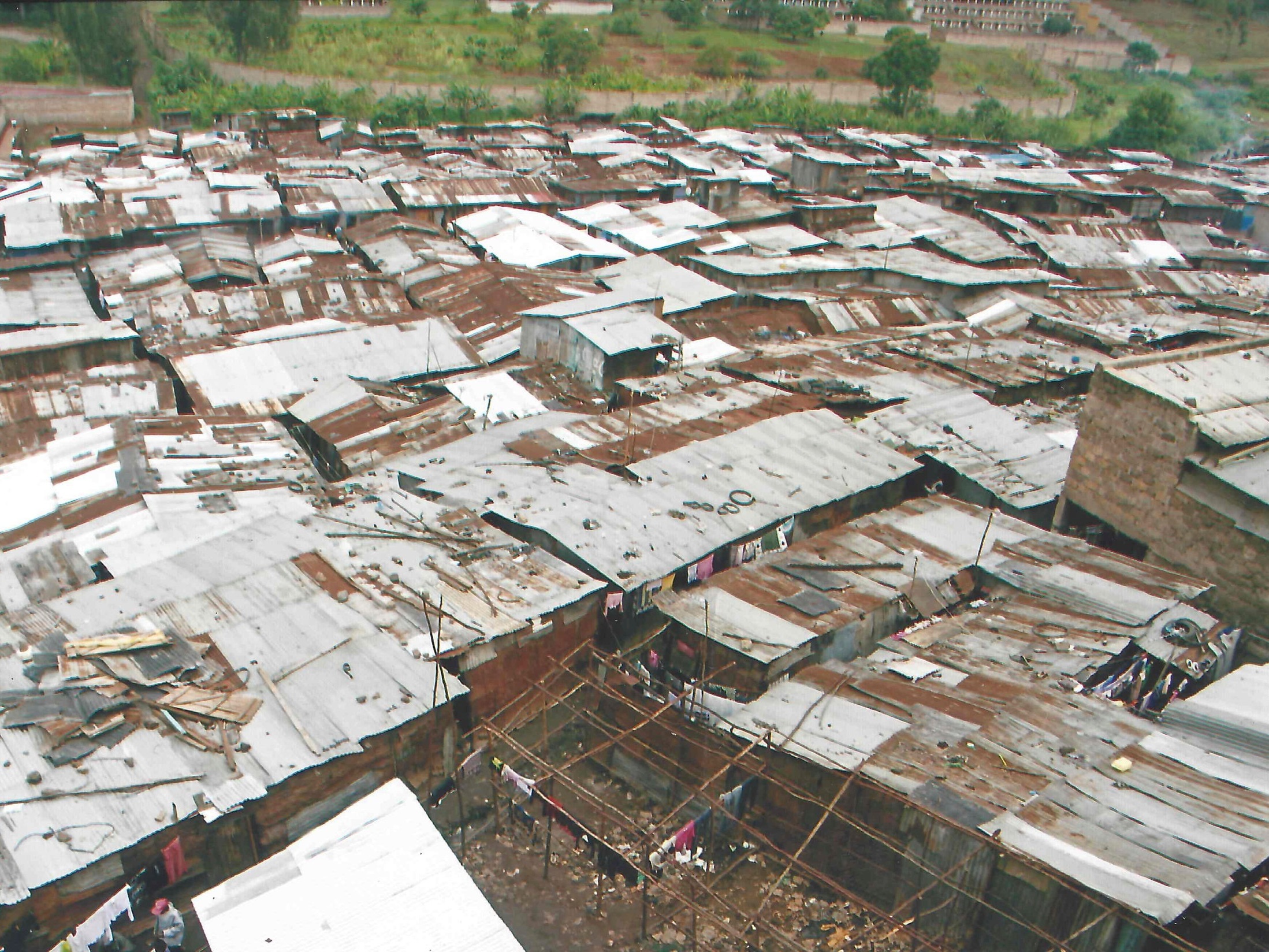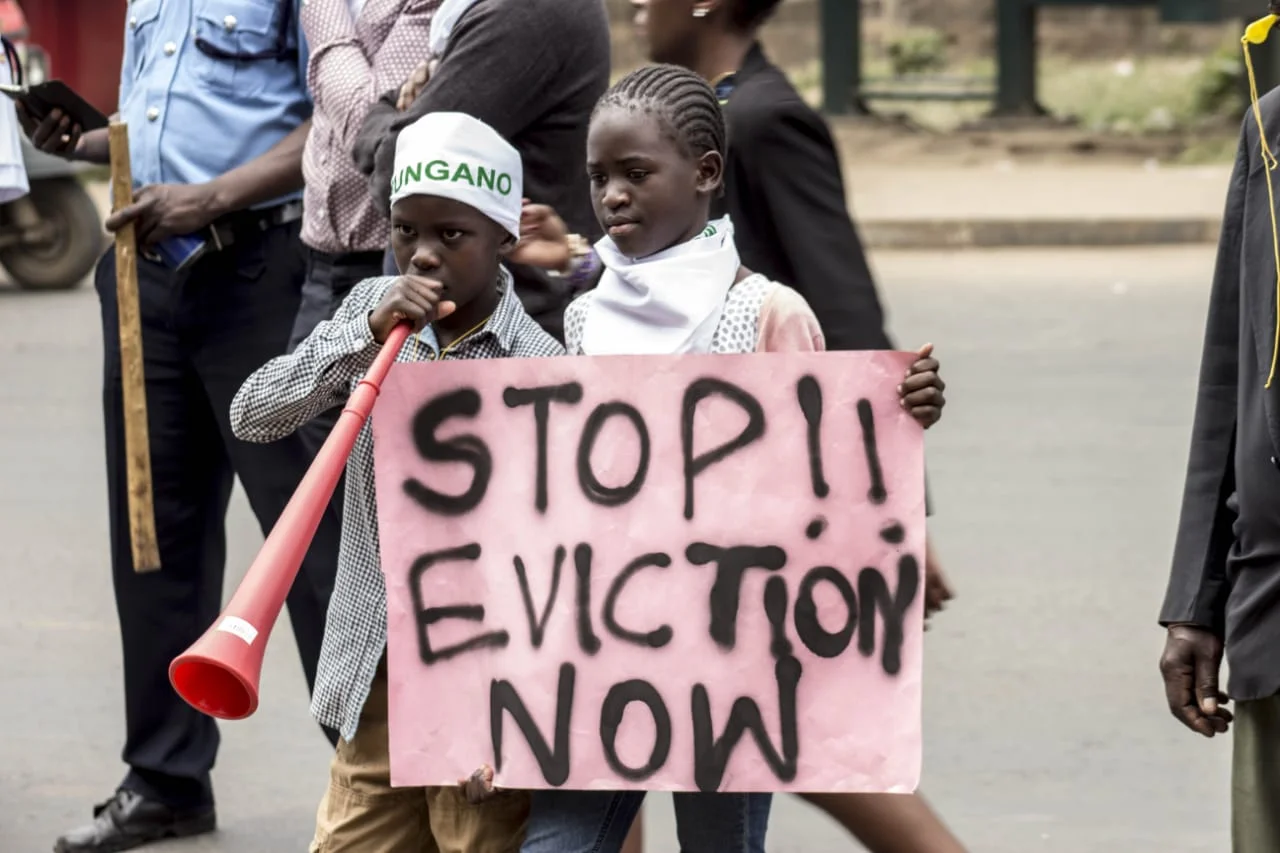Muungano’s history, told by those who were there
National federation leader Joseph Muturi introduces our new oral history archive that tells the history in film and text of Muungano wa Wanavijiji’s first 20 years, 1996–2016, through the words, memories, and stories of 47 slum dwellers, activists, professionals, and civil society partners who were present at different stages along Muungano’s journey.
— — —
I first got involved in Muungano in 1996 as the movement was just emerging. I was a kid, fresh out of school, and there was a forced eviction that demolished the informal market in Kibera where my mother had a stall. Some political elites had decided they wanted to take the market’s land.
How we resisted, and held onto our stalls and that land is another story. But that’s when and why I got involved.
Nationally, those were hard times for poor Kenyans living in informal settlements, especially Nairobi. There was land grabbing, evictions and demolition all over the cities. Muungano emerged from poor people coming together across many informal settlements, to fight the evictions and land grabbing. The resistance was sometimes peaceful, sometimes violent. Most of us who got into the Muungano activism in the early days had gone through the experience of forced eviction.
Since then, things have changed a lot, for Kenya and for Muungano. In 2016, the federation marked 20 years, and we realised we have not been doing enough to chronicle our struggles, especially during the early days. A lot of our struggles and processes had been documented piecemeal or by outsiders. It was important for people to understand who Muungano is and what it stands for: for all of us to have the movement’s history as a point of reference—federation leaders new and old, future generations of Muungano, and other activists in solidarity with the struggle.
Kiamutisyia village in Mathare, Nairobi (opposite the mental hospital). This was one of the first slums in Nairobi, occupied from 1995 by landless and displaced Kenyans who had been evicted by the colonial government from squatting in City Park. Source (photo and caption): Emily Wangari, Muungano Mathare.
We knew we wanted to tell our story ourselves. To have Muungano’s history told by people who were there themselves, who lived the struggle, on the frontline; people who inspired the struggle. The cross section of everyone who participated in these history interviews reveals a wide range of different people, experiences, perspectives and opinions. But in one way or another, each speaker was involved in the creation of Muungano and in bringing it to where we are now.
1997: A Kenyan grassroots theatre group performs stories of forced evictions and land struggles, as part of community mobilising efforts in informal settlements. Top right: Joseph Kimani, one of Muungano’s early community mobilisers. Source: Amnesty International, via Joseph Kimani.
Muungano didn’t just emerge from nowhere, and our history explains the reasons why Muungano is Muungano today. With this archive, in film and text, we want to inspire young leaders, activists and change makers across Kenya who are coming up in the movement. A generation without a history is a lost one, and we wanted the younger generations to not get lost. They must understand that Muungano is not just another NGO or CBO that works in slums: Muungano is about people in informal settlements—how they live, their struggles and their resilience, how they relate with each other, and how they relate with their leaders.
2002: Muungano’s first slum upgrading process in Huruma, Kambi Moto, learning from other SDI federations and working with Nairobi City authorities. Source: Muungano wa Wanavijiji
If our new generations of federation leaders can understand Muungano’s history, they can also learn about the different strategies and methodologies the movement has employed over the years. A lot has changed from 1996 to now, in terms of Muungano’s strategies and how we mobilise and organise. Our advocacy was initially about confrontation and defending homes. The government was the enemy. But over the years this changed to dialogue, to now where we often see government more as partner than an adversary (although those old skills of resistance are kept in the federation’s back pocket). Changes came about when we started organising around women-led savings groups and data collection, learning from the experiences of SDI federations in other countries. The issues around which we organised used to be only 'land and housing’. Then later, we started addressing things like sanitation, water, drainage, health—real problems that particular communities were facing.
There have also been changes in how the Kenyan government relates to informal settlements and to poor people, and we acknowledge the role of the federation in building that. Over the years, Muungano has given a face to those who were faceless and a voice to the voiceless, putting informal settlements on the maps, as human settlements—not swamps or forests as they have often been classified.
Muungano's interaction with academia and professional support has also grown. And at times we have succeeded in changing how professionals think. Initially, they would talk about informal settlements, but not talk to slum dwellers. Now, there is some level of recognition that informal settlements are made up of people, who are having these problems, and they themselves also have the solutions. But there is a long way to go yet.
2012 (top) Mukuru evictions protest; and 2018 (bottom) Kibera forced evictions. Over the years Muungano’s relationship with the state has changed towards dialogue—but many of the same old challenges are still there and those old skills of resistance are kept in the federation’s back pocket.
I don’t look back on Muungano’s history through rosy glasses. Watch the interviews and you will hear how many people have died, been beaten, or violently lost their homes. But for me, the interviews are an inspiration to reflect on where we started. We get so caught up in this work we forget that Muungano’s history is also part of ourselves—where it started, why it started. Sometimes we forget to create opportunities to re-engage, to remember this is the reason we exist.
There have been tremendous gains. Today, young people in Kenya are enjoying the fruits of Muungano’s struggle—the work, anger, pain, sweat, blood and tears their parents and grandparents went through, before. But many of the challenges are still there. Most of our slums are still informal, still lack tenure. Most of our slums still lack services. Can the federation’s younger generations also find the fire in their bellies? Can they also be hungry and angry for change? The challenges are still there, the struggle continues …






